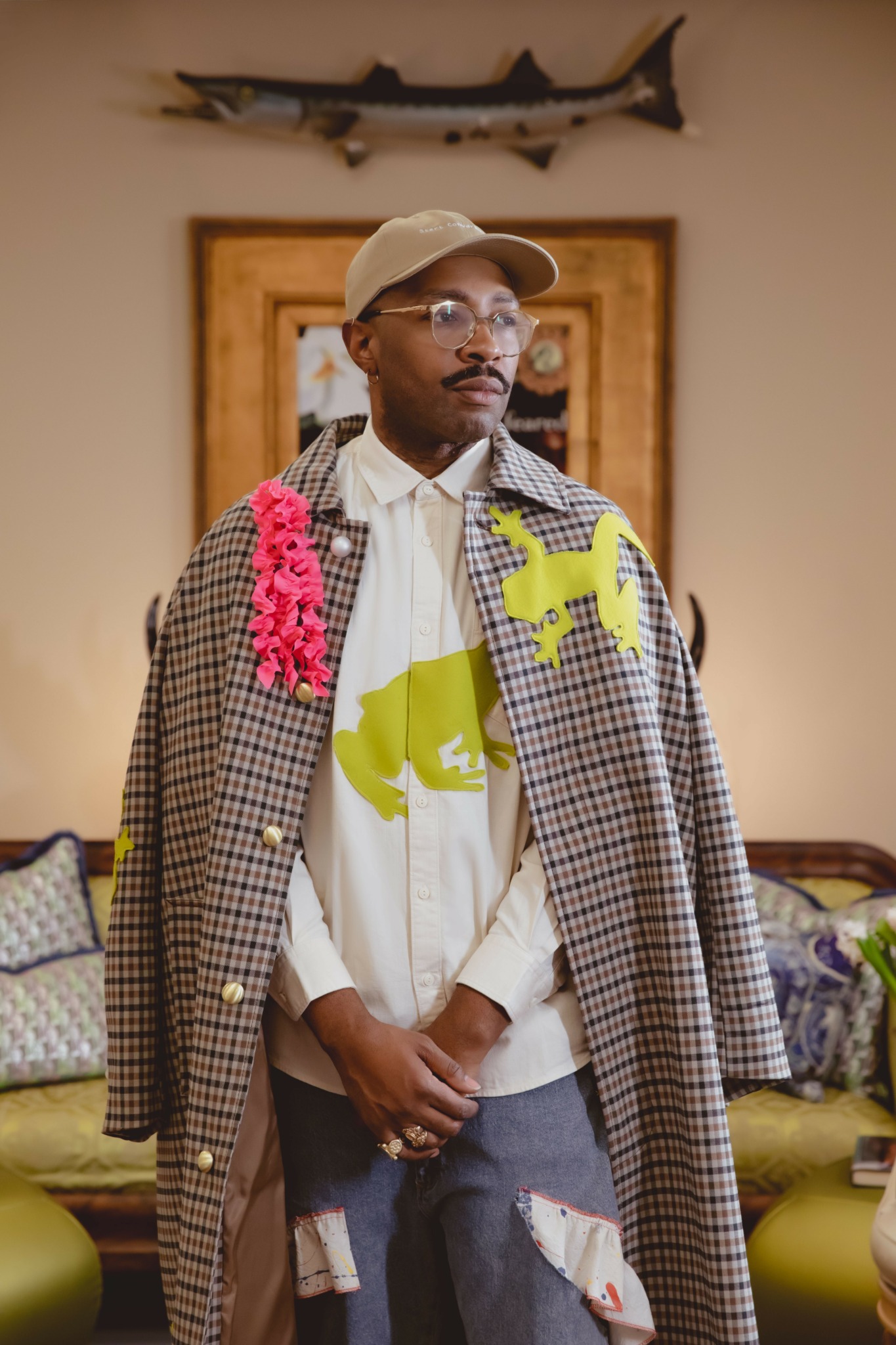We caught up with the brilliant and insightful Parron Allen a few weeks ago and have shared our conversation below.
Hi PARRON, thanks for joining us today. Learning the craft is often a unique journey from every creative – we’d love to hear about your journey and if knowing what you know now, you would have done anything differently to speed up the learning process.
I emerge from the Q train at Herald Square and pass through the Garment District en route to the “office”. I have walked these streets nearly every day for over a decade and have come to know them, the good and the bad, as well as many native New Yorkers. But my knowledge has done nothing to dull my sense of wonder. I am still mystified by this city and the spell it casts, the gritty magic that drew my childhood imagination here through a television screen in Mount Olive, Mississippi.
More often than not they give me a generous strip about four inches wide from selvedge to selvedge. The fabric splits cleanly as the blades shear through. I’m not timid about taking my own swatches from stock rolls, but I dare not cut these pieces myself. Such fabrics are like ancient scrolls: one wrong cut and the value is lost. I coil the treasured strip up in a zip-top bag and put it in my backpack.
With the cutting part of this ritual complete, we move along to the gossip that defines any interaction in the Garment District. I’ll hear about everyone’s children, recent dating adventures, and what new bars to check out, then get an update on what big-budget streaming series recently ordered fabric to evoke high style in the 60s or the 80s or some other interesting decade. These fabric stores are as much about the people as the products. Even the products are really about people—who designed the print, the embroidery, the beading. Fabric is about people. Every staff member at these shops has their own story and their own reason for being in the business, but they all appreciate a designer who loves fabric as much as they do and whose designs can do justice to fine textiles. To them, seeing their prized threads shaped and worn and loved is the highest form of praise.
Sometimes the camaraderie and business intrigue shared during these morning chats make me think I might be happy working in a fabric shop. But then I look at the bolts of fabric lying on the cutting table and remember that this is where the job ends—with a cut. I consider the stack of designs on my desk and the garments they will become, the women whose days and nights will be brightened wearing them. And so the thought of selling fabric passes out of mind. What is the point of admiring fabric flat against a white linoleum table all day? Fabrics’ highest purpose is to bring people the confidence and joy that come from wearing them out in the world. As a designer, I am part of that transformation, and it all began in Mount Olive, Mississippi.
I spent so many childhood hours at Momma Ruth’s little house while my parents worked as educators in Lexington some miles away. Her home was nestled in the clay hills at the eastern edge of the Mississippi Delta. Mount Olive wasn’t even a proper place but a local name for the area of scattered houses and small farms around the Mount Olive Missionary Baptist Church, where Momma Ruth’s side of the family worshiped. Back in the day, Momma Ruth and Granddaddy’s house looked out over the few acres of cotton that they owned bordered by rolling ravines of kudzu vines that consumed the land around them.
Momma Ruth and Granddaddy didn’t have many precious things, and most things needed to pull double-duty. She’d sweep the bear floors with brooms of bundled reeds from the field, and she’d pull her grandbabies along the clay soil on cotton sacks during picking season. Everything came from the land and went back to it. Clothes were mostly cotton, and were darned until they wore out. When they wore out they were cut up for head wraps. When the wraps were finished, Momma Ruth used the scraps to lash her brooms together, and so it went. Life was hard, but Momma Ruth and Granddaddy owned their home and had what they needed to get by, which was more than most black folks on the delta could claim. But Momma Ruth was a schoolteacher and had the mixed blessing of a solid education, which made her one of only a handful of folks her age out in the hills who could read.
Busy as Momma Ruth was, whether working at school, watching grandbabies, or picking cotton, she made time to help her friends and family however she could. I remember our walks together to the spare little houses out in Mount Olive, where folks would give whatever they could to show gratitude for help reading their bills and other important mail. I can still see Sister Jackson, a friend from the Missionary Baptist Church, standing proud and more than filling her doorway with a basket full of sweet potatoes. Sister Jackson was kind but hard, and I knew it pained her to have a neighbor know her business before she did and to have it read aloud like that was just about as much as Sister Jackson could bear. Her mouth was always turned down and she would cut her eyes at me. She appreciated Momma Ruth’s visits and didn’t mind giving her the sweetest jewels of her harvest; it was being reminded of what she couldn’t do for herself that hurt.
Momma Ruth wasn’t too sweet on the arrangement either. She didn’t prize the task of knowing folks’ business and had no desire for their resentment. But I knew she was proud and that other folks sensed that. It wasn’t always that way. Folks used to feel closer, like family, and held each other up. “You reap what you sow,” she’d say about the widening divide. But the loss of those bonds was one among the many changes she had seen in Mount Olive over the years. The whole landscape had changed since she was a girl. She knew the hills before the government planted kudzu to control erosion, and our walks drew her along roads choked with vines but still poor and unloved. “If I was a man, I’d burn it all down!” she’d say, sweeping her hand across the horizon. As we’d walk up the road to Momma Ruth and Granddaddy’s house her frustration would get the better of her. “We got the raggediest house out here,” she’d say, as we would come upon the little house in a bare dirt patch behind cotton rows. She knew that things could be better.
We would make our way inside in time for Oprah and Momma Ruth would open old newspapers on the floor for me to play on. She’d squeeze the lid to her button jar and out would tumble so many buttons in different colors and textures—bone and shell and glass and Bakelite—scattered over the faded newsprint advertisements for women’s dresses and shoes. With me adequately preoccupied, she’d go to her sewing corner, the one place in the house that was properly and totally hers. It was her home altar, where she’d make magic from scraps for friends and family to wear at Sunday service or on special occasions. The cast iron Singer machine stood proud against the wall like an organ, its worn petal would rock up and down under Momma Ruth’s foot while the needle rattled along.
Plentiful as used garments and scraps were, Momma Ruth took every opportunity to have Granddaddy drive her to Durant or Greenwood for something finer. She would sometimes treat herself to yardage of her favorite fabric, silk georgette, to make a church dress for herself or my mother. She’d handle it like a baby, she would lift it gingerly and lay it on the store’s cutting table with care. Once safely back home, she would scurry to her corner and inspect her sewing caddy for all the supplies needed to complete her task.
The caddy hung over her sewing machine, a column of pockets rendered in a circus print fabric that, to my childish eyes, was the most luxurious scene in the world. Her fingers, graceful and delicate despite decades of cotton-picking and child-raising, would leaf carefully through folded pattern pieces that protruded from bulging red pockets covered in images of clowns who shot water from their lapels and seals that balanced yellow balls on their noses. The tools in this caddy, the patterns and pins and thread, were the only things in her home that were completely hers and pliable to her imagination. And atop them all, in the highest pocket of that red circus caddy, rested a pair of sharp metal shears with chipped black-painted handles. She would turn back to the kitchen table, her arms filled with these sacred instruments, and set about her business.
I watched the onion paper of her dress pattern as it unfolded in the afternoon light and cast a fragile shadow over the sea of silk. Her precious scissors rent the silk with the rare and delicate crunch of footsteps on grass in morning frost. The machine chirped along and stitched these pieces into folds and pleats and curves that brought joy to Momma Ruth’s eyes like nothing else in the world. I would ask her to keep the scraps to play with. “Make every stitch and every inch count,” she’d say. I would take the crepe-y scraps of those projects and tie ragged bits of georgette around my little play toys so that they might feel joy like Momma Ruth felt in her dresses. I still feel that way when draping fabrics on models, always looking for that glimmer of joy in their eyes, like the fabric I put on them has allowed them to discover something new and beautiful within themselves.
Momma Ruth died when I was thirteen, and she never knew that her love for silk georgette would inspire me to become a fashion designer and make it all the way to New York City. Her house caught fire while I was away at college; all was lost—her patterns and scissors and sewing machine, and even a cedar chest full of fabric and quilts. Sad as that was, I almost think she would have wanted it to be that way. I think back on that little house amidst the kudzu and the neighbors who couldn’t love Momma Ruth’s best gifts. She knew too well how sad a place can be when beset by all the wrong sorts of change. It was time to make something new.
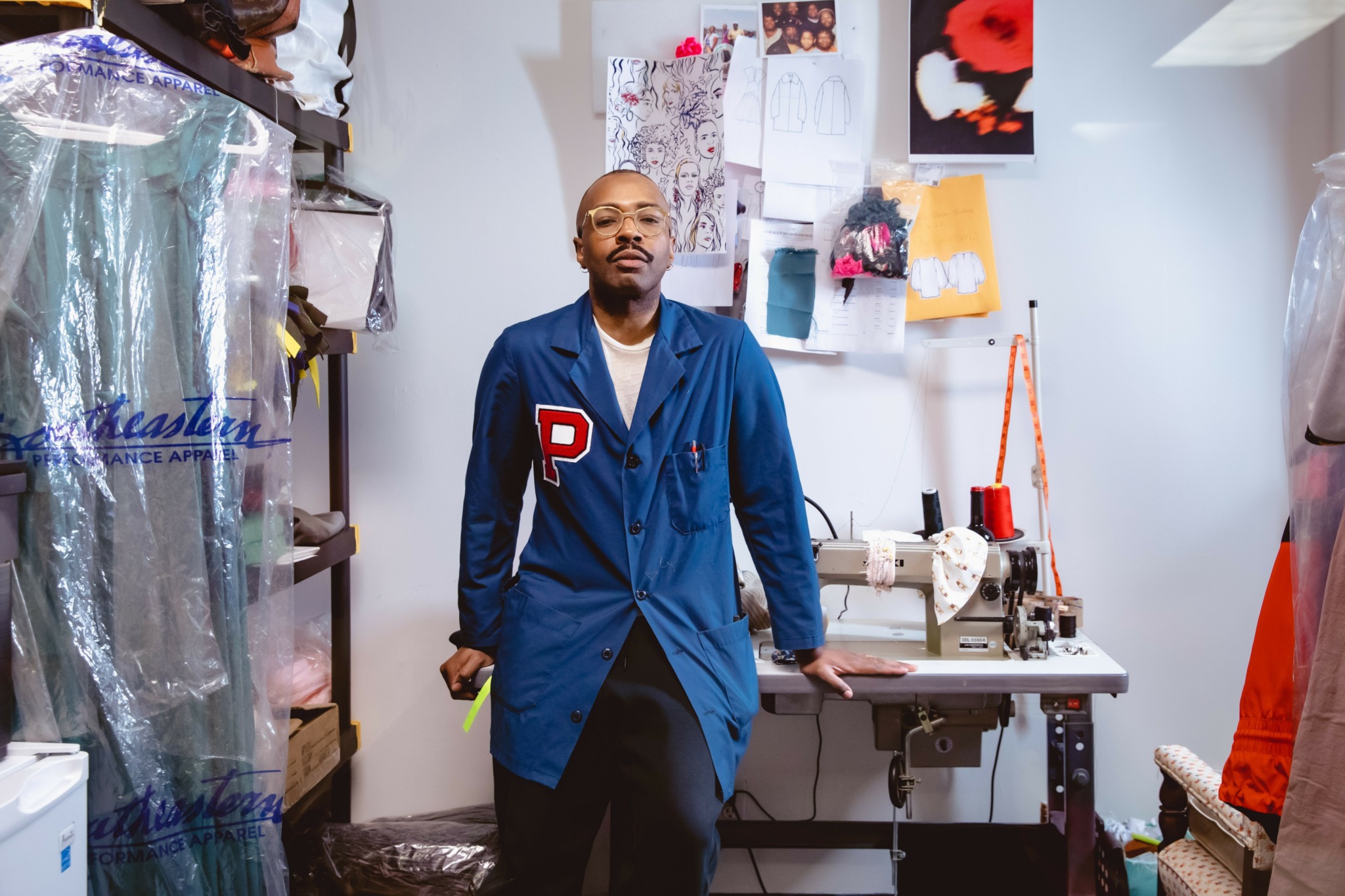
Great, appreciate you sharing that with us. Before we ask you to share more of your insights, can you take a moment to introduce yourself and how you got to where you are today to our readers.
My name is Parron Allen Edwards-Stimola and I am a Brooklyn, NY based Fashion Designer. Parron Allen is the name of my independent clothing brand. My design vision is inspired by my childhood in Lexington, Mississippi. My (maternal) grandmother, Momma Ruth, expressed her love by sewing dresses for the women in our family. Momma Ruth made dresses as so many Black women did—with whatever materials were available—creating beauty from remnants long before sustainability and up-cycling began their march toward the mainstream.
My designs echo this joyous harmony of whimsy and practicality in a voice for the present moment, reclaiming sustainability as a part of my cultural heritage and designing inventive collections that incorporate fabric remnants, discarded textiles, and thrifted garments. Prior to founding my brand in 2021, I studied design in the US and UK and honed his skills at the corporate headquarters of Vera Wang, Ellen Tracy, and Rebecca Taylor.
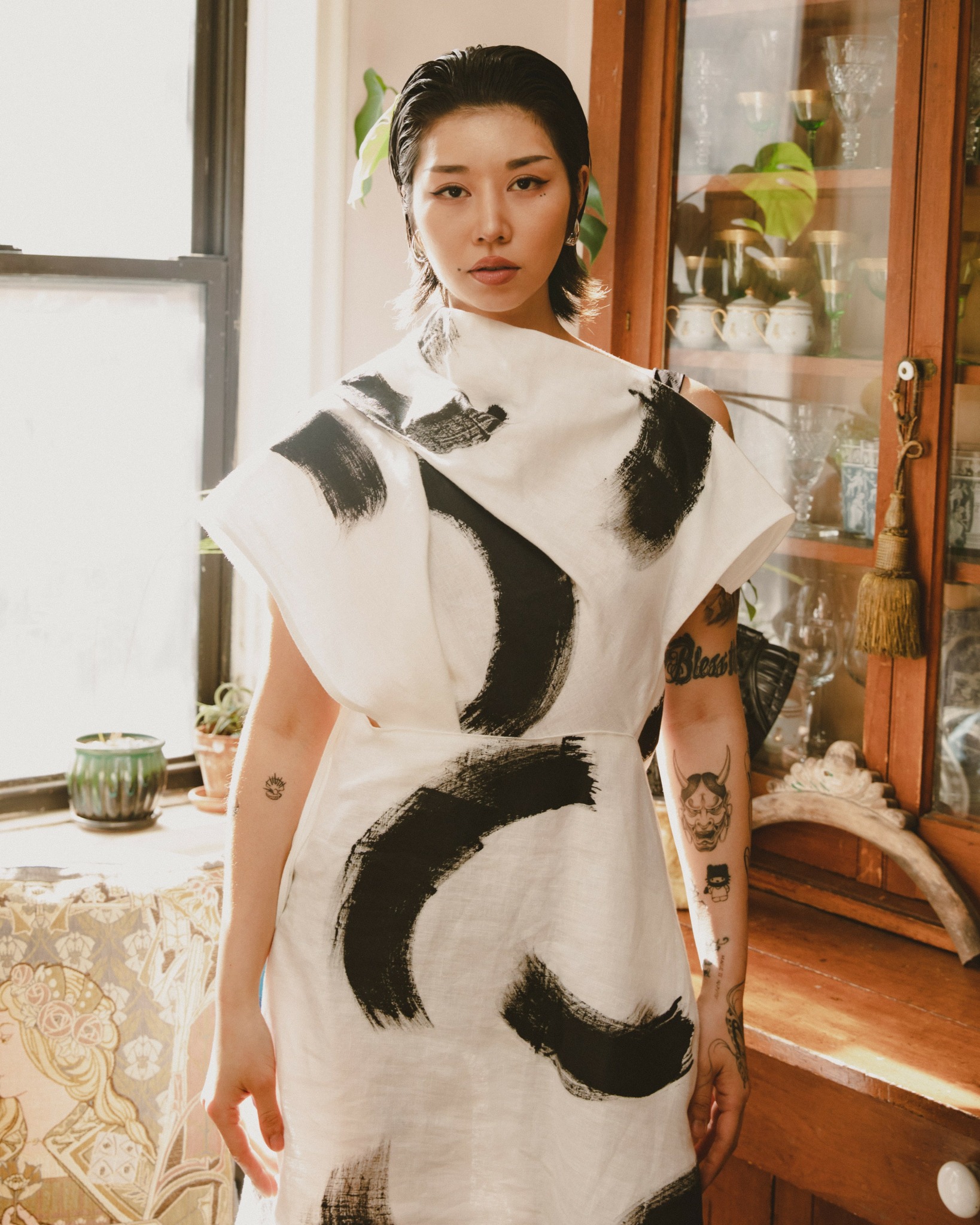
We’d love to hear a story of resilience from your journey.
A Single Garment of Destiny; Young, Black, and Creative in America
“We are caught in an inescapable network of mutuality, tied in a single garment of destiny. Whatever affects one directly, affects all indirectly. “ – Rev. Martin Luther King, Jr.
I know that MLK quotes can get a little played out, and have been used on both sides of recent debates, but his words are used so often because he had an unbelievable ability to analogize, to paint pictures in words. I cannot think of my life – in fashion and out – without seeing King’s single garment of destiny hovering before my eyes. I see the threads pull in the world around me and I try to hold, to keep the tension from pulling my vision out of place, but it is hard and I am not sure what the garment will look like in the future. So let me show you how my bit of this garment was woven.
I’m 40 years old, but I grew up knowing that my mother had to hide from the Klan as a girl in the same town where my folks raised me. That thread is bright, clear, and ugly before my eyes. It runs through our whole garment, yours and mine – even if you don’t see it.
I cannot recall being called any type of racial slurs directly to my face growing up. Most folks in my community were black, However, just like with most things as a sheltered youth, you don’t get introduced to some things until a certain age. I have always been really sensitive to that type of stuff, coming from the south; there’s a certain sense of honor and pride I needed to protect with my heart.
Now, in the south, we know racism. I am sure my parents, grandparents, and great grandparents (all the greats) had their share of poor treatment. I see the picture of my great-great-grandmother every day; born enslaved, died free. I can recall the tales about things that happened back in the days of the Jim Crow South. The Story of Emmett Till being the most terrifying. He was just a boy, like me, and all I could think was how could that happen to a child!
Then my mother’s powerful recollection of how she once hid under my grandparent’s bed one night when the KKK was riding out hunting down Freedom Riders, who made a special trip to Holmes County, which is mostly black, to make sure people were registered to vote. The KKK went from door to door at every black household-they knew trying to flush them out. The Freedom Riders would often hide out with families that felt bold enough or capable to accommodate them. My family didn’t sign up for such, but every black home was a suspect, and “the boys” were out and didn’t care – they’d force themselves into your house just to make sure.
When it came to my generation, things had shifted a bit. I am certain my parents set down and made sure the standards were set on the use of certain words in our home. My Mamma was a librarian and she would challenge me often by saying things like “you know you can find a better word to say than that”. This was frequently the response when I said “I hate (insert anything akin to chocolate or homework).” I can also remember a talk I had with my Daddy about some off-limits words. The N-word being the main one, no matter the context. FOOL and SISSY were some others. Unfortunately, the bullies never got that memo in school. I was chubby then, and sensitive as ever, so you can imagine how much I heard “BIG SISSY” in grade school.
Shopper’s DelightOne of my first fashion illustrations I did growing up. I always idealized Vogue Magazine. I imagined making beautiful things for women and featuring them in the pages of Vogue.
Lexington, MS was one of those interesting places in the rural south where black people outnumbered whites by nearly two to one in 1990. I am sure that ratio has shifted even further by today, mostly because white folks either died off or moved out of the town completely. So I grew up seeing black police officers (who were all pretty much taught by my parents or related to people my parents taught), law clerks, and county officials. I never had much of an opportunity to question how poorly police officers or law enforcement might treat you if you were black. You just had to do something bad and you would go to jail. Simple, right? I thought that wouldn’t be me because who has time to steal when you are drawing on the floor, stomach facing downwards, with papers everywhere dressed in your white t-shirt and your favorite Smurfs underwear (being 17 was a breeze- joking of course!-that was more along the ages of 3-10). Though, to be honest, this is still my favorite drawing position! Like many of us, I was taught to respect the police and if I ever got lost they would help me find my mom.
I also watched a lot of PBS, including Sesame Street, and WISHED from an early age that I could be Mr. Rogers when I grew up (now I want to be the Mr. Rogers of the Fashion World – still working on that). So I really had an idealized vision of what authority figures like police officers were supposed to be like. Then I recalled the Rodney King incident in 1991, the videotapes shown at the hearing, and the 1992 race riots in LA.
I was 6 years old at the time and saw snippets of it on news outlets. I didn’t quite understand what it all was about, but I did understand that the police beat him and they didn’t particularly care for the color God made his skin. It wasn’t just that Mr. King was black – he was black like me – and looking back at his photos I would say we have some similar features. Long lost cousins, perhaps? All jokes aside- this was America beyond the deltas and endless coils of kudzu vines I knew in my small town in Mississippi. Some places, like LA, were too nice and valuable for white folks to just run away from, so they stayed and filled the ranks of law enforcement, policing the people they resented.
The public schools I attended were all black and mostly led by black staff and teachers (my parents among them). But early education options were limited, and my mother paid good money to get me into the fancy preschool in town. It was called the “Children’s Center.” Nice as it was, I hated the idea of not being able to do my own thing and draw all day, but Mamma paid good money and I ended up there after much crying. It looked and felt just like Sesame Street, and I was quickly won over. Asian kids, Black kids, and White kids! Like TV! I even made friends with a biracial girl named Clementine! I was in love; she was pretty and the teachers had a hard time saying her name, just like mine (“No, it’s PAIR – RUN”). They never really got it.
But my Sesame Street life at the Children’s Center didn’t last. Over the course of the year kids vanished – white, Asian, even Clementine. It changed overnight. I guess they didn’t set the price high enough, because white families were dismayed at how many black kids from outside of town their children had to play with. I didn’t know it then, but “white flight” happened before our eyes, and I lost friends and resources in my early education because of it. Michelle Obama’s personal story of this in the Chicago Public Schools is an amazing perspective and one of my favorite passages in Becoming. I am saddened by it to this day – my opportunity to hang out or play with those kids (and their opportunity to play with me) was over before I learned how to tie my shoes.
We should have known. In the late 1960’s, just as my parents were starting their careers, white families across the south banded together to form “Christian Schools,” if you can believe the nerve, where they could set the private tuition high enough to keep black folks’ kids out and avoid real integration. Holmes County had a Christian School. It still does. And it is still almost all white. Even for black families who could afford admission, why send your child to a school where the whole faculty is white – not a single black face in leadership?
Holmes County Public Schools, like S. V. Marshall High and Elementary School, where my parents both taught, remained almost all black in leadership and attendance. I used to imagine them donning Afros and fighting the power back in the day. Mostly because I used to peruse old family albums with my mother and dad at their colleagues’ homes hanging out. That’s when school felt like East Side High in the movie “Lean On Me.” Not as crazy as the beginning of the movie, of course, but more like the spirit at the end of the movie, when people became prideful and excited about not being a statistic in a black school and pursued higher learning. My parents always pushed the idea of education. My dad being a math teacher would often tutor me and push me to get that stuff but I guess my mind was too crowded with drawing, video games, and cartoons!
Wait! Before folks get the idea that this economic segregation was some “solution” or an arrangement that worked both ways, please let me point out that the public schools survived on our solidarity and culture and close community all the more because we were starved of funds. Yeah, I loved seeing black role models and I long for the days when fashion can truly feel like S.V. Marshall in that way (more on this later) but the funding wasn’t there, and still isn’t. White families had centuries of opportunity to buy cheap land, make a home, build assets, and develop networks that supported higher incomes. The state learned early on that Christian Schools could leverage this advantage to fill the gap for white students and that they could save money by just letting the black schools under perform. It’s still better than what the black folks had been used to in Mississippi, right? You get the picture.
“The talk” came around when I was 12 years old or so. My Dad’s biggest lesson was to make sure I was ready for the world and what that meant as a black man. Spoiler alert: if you are not hoping to learn, or would rather stay blind to why some black men feel less-than or might have a grudge against your easy grasp of the American Dream, then maybe the following will be news to you.
Black men have to work harder and longer just to earn close to equal pay to white men, and that is made even harder in situations where a white man’s assertiveness can be twisted as aggressiveness when exhibited by an ambitious black man. My Dad’s advice was to keep my head in the books, get my education – knowledge is power – and if I have that, no one no matter what color, nobody can take that from me. They might make me feel stupid, insult me, spit in my face, but the knowledge I have is mine. Get it. Learn it. Protect it. No matter how much I wish this weren’t true it, unfortunately, is this way. It’s hard. You add this with social injustice of black and brown bodies, the likelihood of getting thrown into prison for false accusations, high school dropout rates, and no positive male figures in the community you are handed a cocktail that’s seconds away from a DUI.
I am not saying hard work isn’t worth it. It’s just that we need to do more of it for similar results, and it’s often ingrained in us that people will see us differently and we have to work harder to prove them wrong because of whatever prejudices they might already have. I’ve been at it since I was 12 and it’s exhausting! I was already making up for other people’s BS well before I started my career. Who knew!
Like with anything painful, these times will only make us stronger and braver. Braver to have “THE HARD” conversations. MORE “STRAIGHT TALK”. I recall when Solange’s album hit the airwaves in late September 2016, “A Seat At The Table” was on everyone’s lips. The phrase was added to the lexicon. It opened the discussion and encouraged people of color to re-address what if we had a chance to have an opinion in the board rooms around the world. What would that type of diversity look like?
Fashion has its own plight, filled with discrimination in leadership, underpayment of labor, environmental destruction, cultural appropriation, lack of black models on the runway – you name it. Fashion has sliced multiple pieces from the racism pie and that table is full of crumbs! But black creatives like myself can be there to clean up fashion’s act by giving our unique perspective, and recent signs are promising.
Edward Kobina Enninful, OBE is editor-in-chief of British Vogue. Edward also mentions in his British Vogue article that even growing up in London, England as a youth his mother told him to “keep your wits about you” whenever he left his house. He still to this day holds that same fear and anxiety when he steps out of his home. And he’s the HEAD OF BRITISH VOGUE AND FROM AN AFRICAN COUNTRY! The pains of racial equality run THICK and know no bounds, no matter which side of the pond you are on.
Edward Enninful was appointed Editor-in-Chief of British Vogue in 2017. He was the first person of color appointed to an Editor-in-Chief position at the famed fashion publication and quickly used his position to shed light on the issue. In his piece, Racism Is A Global Issue, Enninful emphasizes that “we need black people ingrained within the infrastructure of the fashion industry, not just on the other side of the camera or appearing on an Instagram feed. People need a seat at the table.” There it is again; a seat at the table. And once we’re there, we make our vision known. Black fashion designers here in the States have made great strides in recent years and we need this growth to become the norm. It is only then that we will see real change and design a better future in the industry that I’ve loved ever since I picked up my first Vogue magazine all those years ago in Lexington, Mississippi.
This is American, and Global, and Personal. I have seen hardships and opportunities; adversity and growth. I hope that this understanding encourages you to support the designers, brands, and other workers who make the art we wear. To see how different my garment may look from yours, but that the threads are woven the same and that we cannot strive for a more beautiful future without each other.
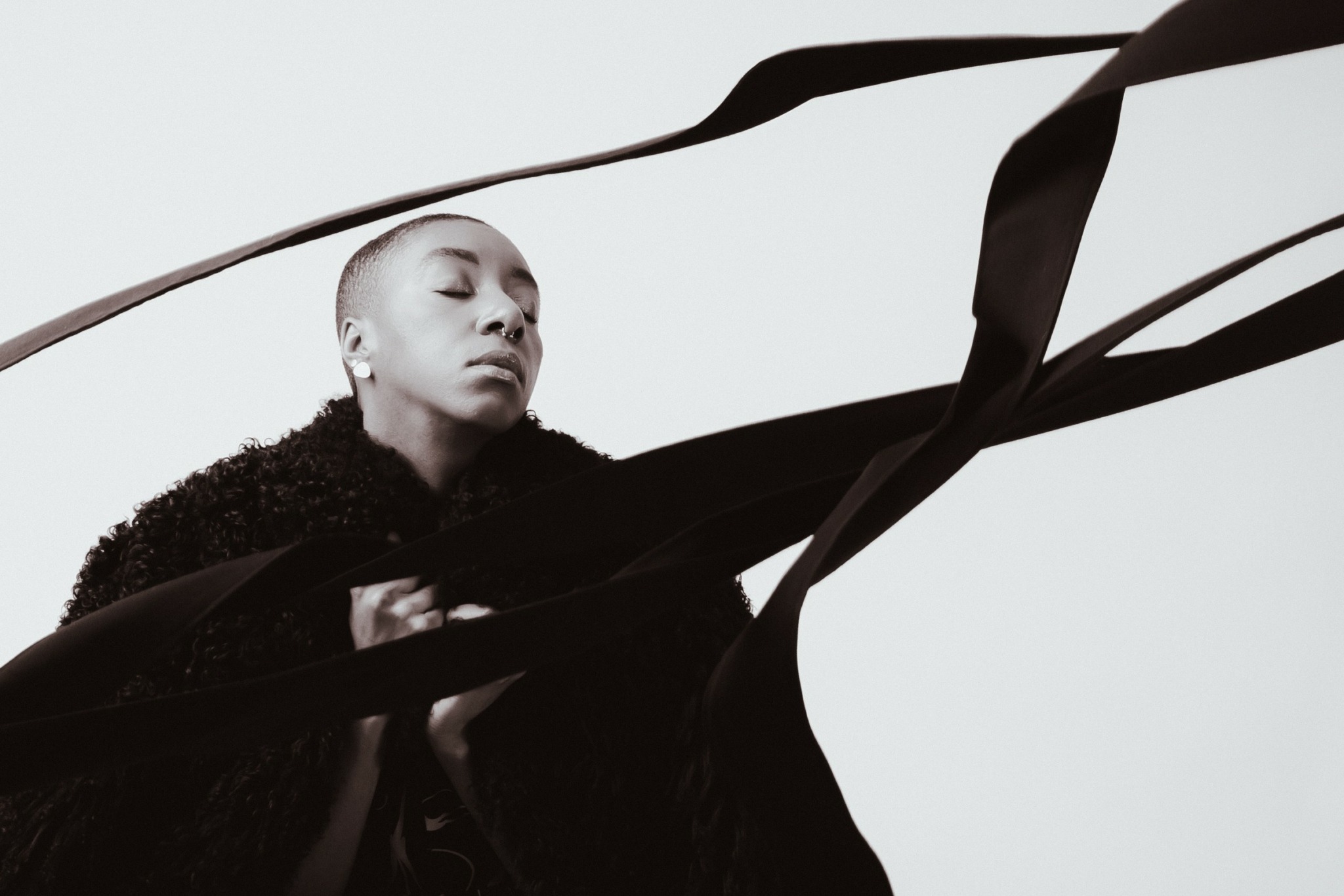
For you, what’s the most rewarding aspect of being a creative?
The most rewarding aspect of what I do is creating beautiful pieces and garments that evoke an attitude of resolute joy for the person wearing the garment.
Contact Info:
- Website: https://www.parronallen.com
- Instagram: https://www.instagram.com/parron.allen/
- Linkedin: https://www.linkedin.com/in/parron-edwards-stimola-32680575/
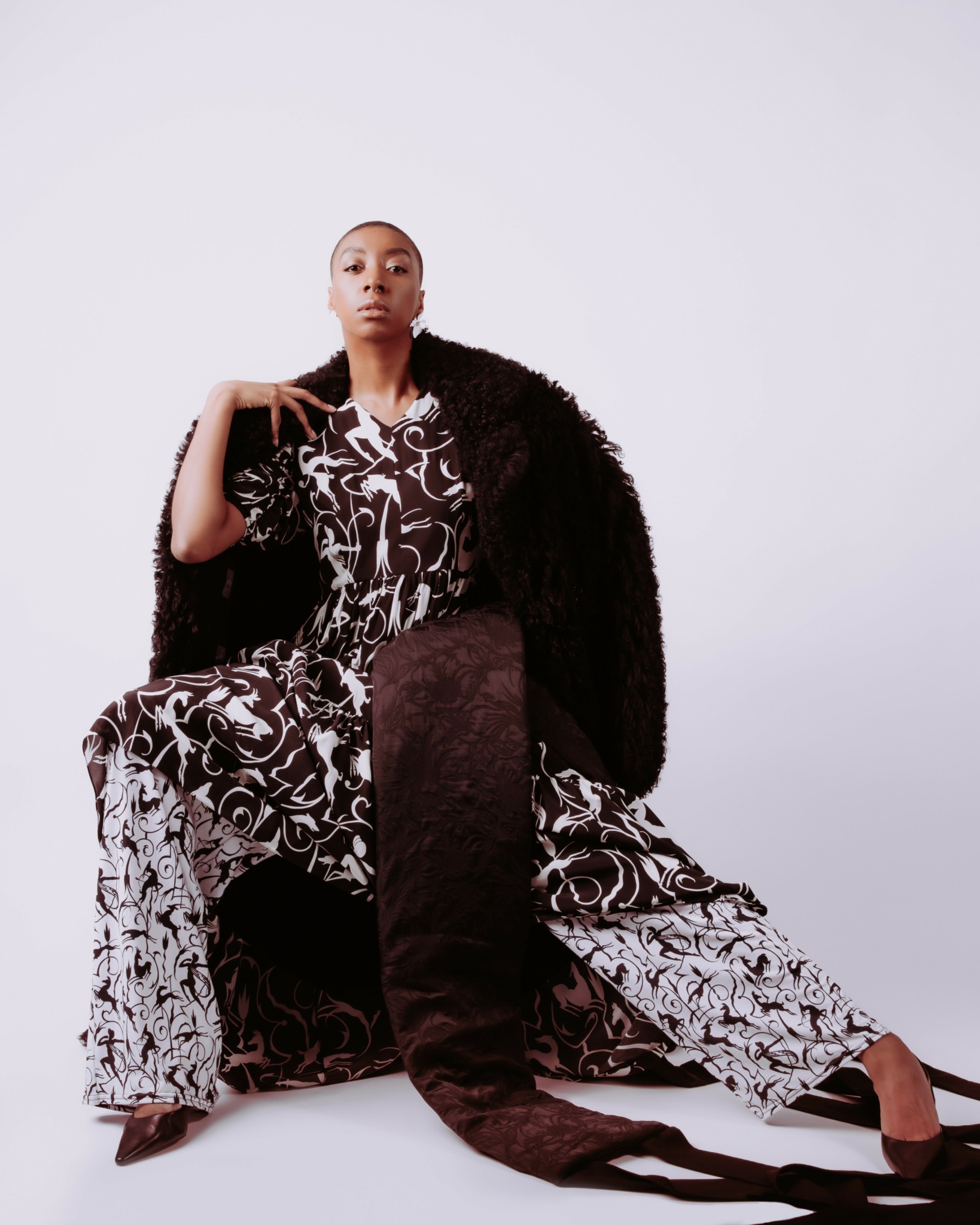
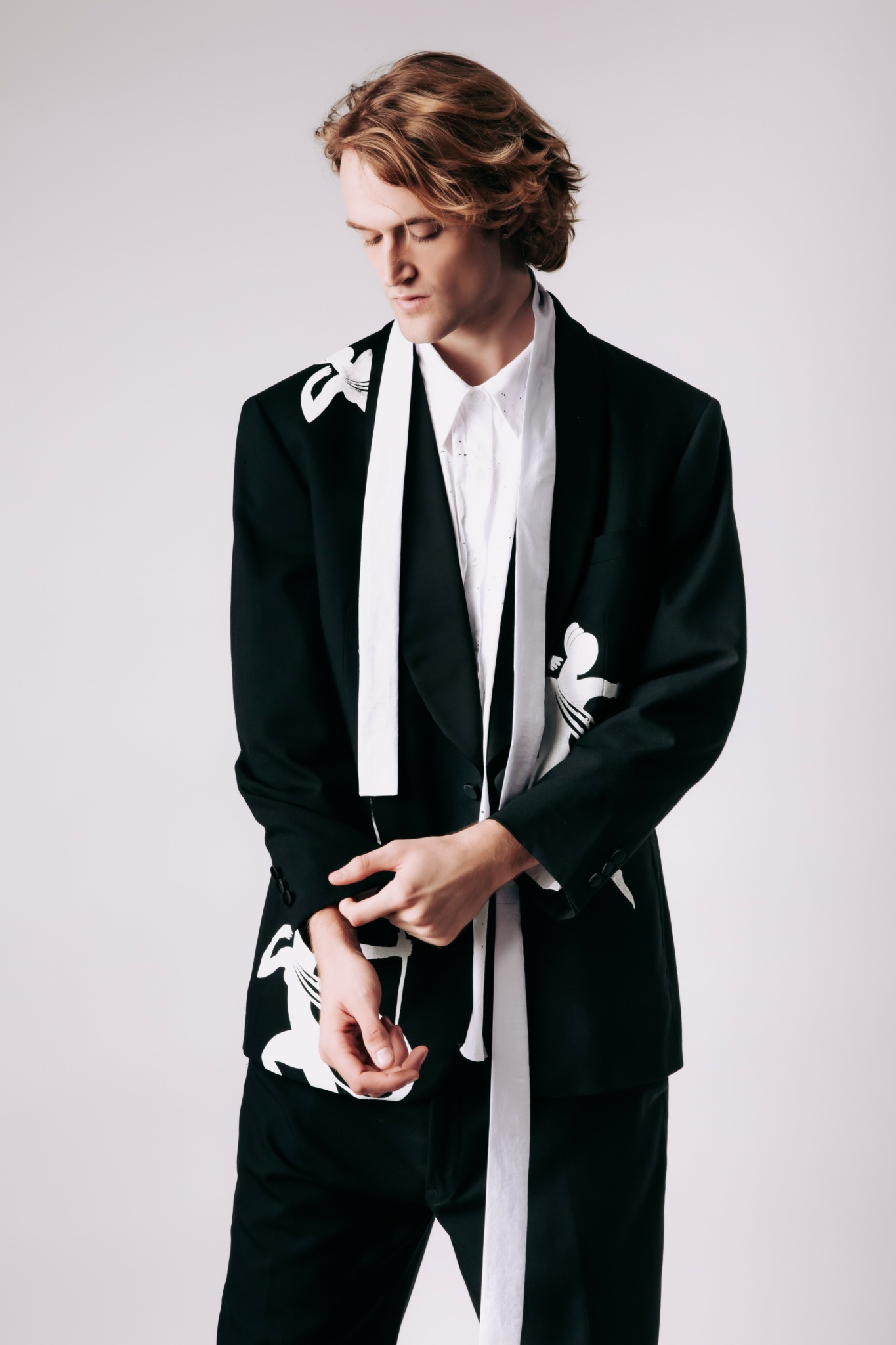
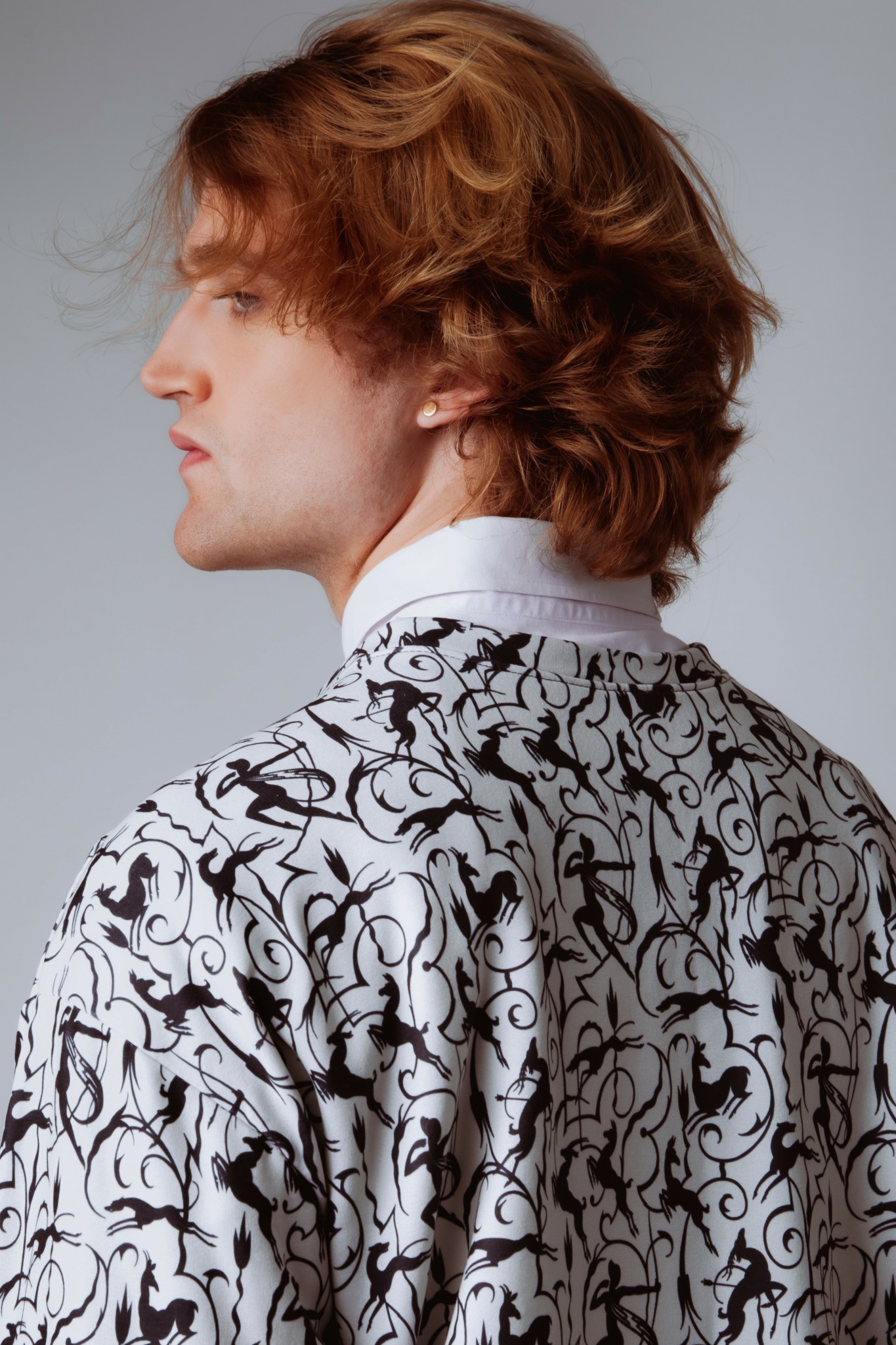

Image Credits
All photos taken by photographer ,Rohit Venkatraman, for Parron Allen.


